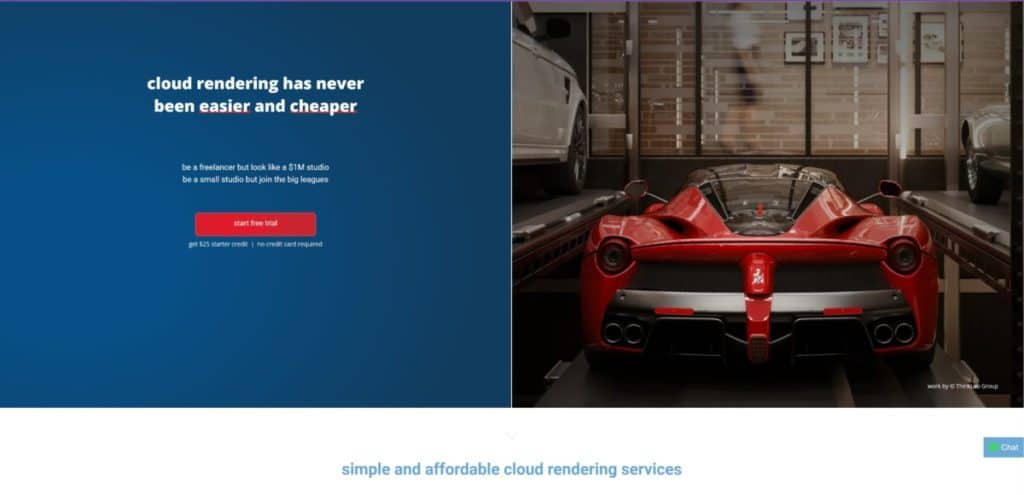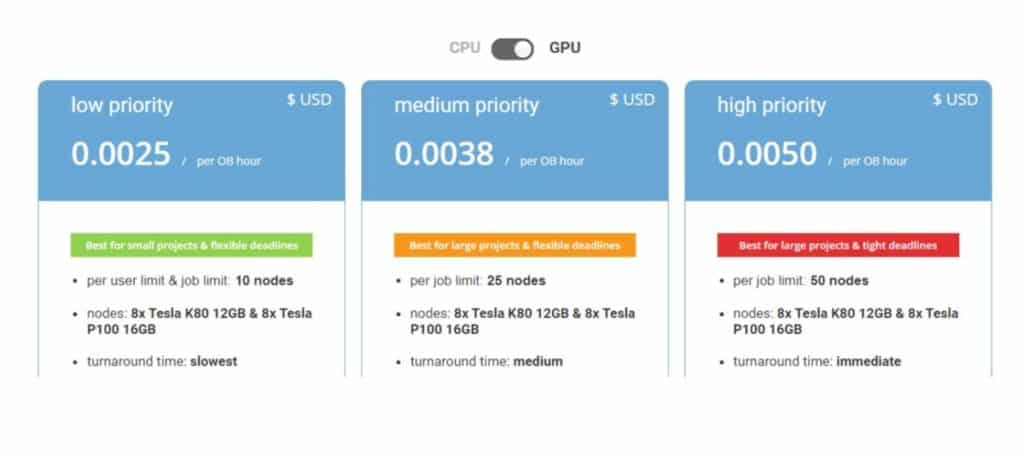Rendering is one of the most hardware-intensive tasks that you can ask of your computer, and for some of us, the task may be too much to handle for our device at home. So if you find yourself needing more firepower for rendering your next project, you can consider using a render farm.
The best render farms that we have tested based on usability, speed, and price are listed below in order of preference.
- GarageFarm
- FoxRender
- TurboRender
- SheepIt
- iRender
- Concierge Render
- Rebus Farm
- FoxRender Render Farm (Different From Number 2)
- GradedBlue
Different render farms all have their strengths and weaknesses, but they work the same way; you upload your project after getting a quote for how much it will cost. Then your project will be queued until a GPU or CPU becomes available within the network to begin your render. And on completion, you can download the final result.
Which Render Farms Are The Best And Why?
We have tested over 20 render farms from different locations worldwide to see which render farms offer the best service.
To determine which render farms are the best choice for you, we’ve broken our criteria down into the following categories.
First, using render farms can seem technical for a new user because it’s something that you would likely have not experienced before. The process is straightforward, but this can be helped with a good front end of a website that allows GNU users of the service to upload their content for rendering efficiently.
Our second criterion is the amount of time it will take to complete the rendering process. Again, this is going to be split between two stages. The first stage, which happens after your initial upload, is where your projects will be queued, waiting for a server or a device to become available for rendering. The second stage will be the rendering process itself.
What will be interesting to see is that it is the first stage that proves to be a critical difference between the various choices for your render farm.
The third criteria are how costs are calculated and how much you can expect to pay for your renders and animations with these render farms.
The base formula here is very similar across most of your choices, so we assess which ones offer the very best rates of them all.
We have divided up our testing into these three categories. So below, you will see a table of the top five choices within each category.
| Position | Ease Of Use | Wait Time | Cost Per Render |
|---|---|---|---|
| 1st | GarageFarm | TurboRender | SheepIt |
| 2nd | iRender | FoxRender | GradedBlue |
| 3rd | FoxRender | GarageFarm | GarageFarm |
| 4th | BlenderGrid | iRender | FoxRender RenderFarm |
| 5th | Rebus Farm | Concierge Render | RanchComputing |
These tables are based purely on our testing, where we have sent three test renders, two of which were images and one animation for testing with each render farm. Your experience may well vary from our results.
Overall, we like the way Garage Farm operates its servers and found it straightforward to use while also allowing for rapid turnarounds or render times and a low cost to match.

Surprisingly, the quickest render farm of all is the one that gives it away by the name. We found that turbo render gave us the fastest results of our tests.
It should also be noted that the top two places for the cost per render are taken up by community-based render farms, SheepIt and Gradedblue.
Why Use Render Farms Instead Of Your Own Computer?
One of the most common questions that you’re likely to ask is why use render farms in the first place rather than your computer?
Whatever the reasons you choose to use render farms as an alternative to your device, let’s look at three of the most common reasons below.
The first reason could be that you lack the hardware to complete the rendering process of your project. For example, some projects may require more video memory than the graphics card of that machine.
You, therefore, have two options.
You can either render it on your CPU, which typically takes much longer than on the GPU, or you can send it to a render farm that will use graphics cards within their servers that have the video memory to complete the process.
Another reason you may wish to use a render farm could be if you are working for a client and therefore have a deadline to meet. Sending off your project to be completed in a render farm will allow you to focus on other things and, thus, be a more efficient approach.
If you want to learn more about Blender you can check out our course on Skillshare by clicking the link here and get 1 month free to the entire Skillshare library.
Are Render Farms Even Any Good To Begin With?
As you might have guessed from the number of render farms that we were able to test, it is a business model that has grown in popularity over the past ten years. Its roots go much further back, though, and the concept was initially devised as a means of being able to render box office-quality animations within the appropriate deadlines.
Examples of films that would have used render farms could include Pixar films such as Toy Story or Finding Nemo.
In other words, the concept of render farms has come from the very top of the industry and worked its way down to a community-based level.

Most render farms will use high-level computers within their networks to allow for high-quality rendering at speed.
If your own hardware is not the strongest, you will find render farms to be a great choice if you want to complete your projects that much faster. Using render farms for speed is especially true if you use a laptop for your 3D modeling projects, with more significant limitations than full desktop computers.
We can say about the render farms that we have tested that there were no outliers of poor performance or poor results.
In other words, you can expect similar results regardless of the render farm dash you choose. However, as noted in the table above, some render farms are easier to use than others. Therefore, some will get the projects faster to you than others, and some will be cheaper than others.
Some monitors do not come with their own speaker system, so many of us need to find a good pair of speakers for our audio if we don’t want to use headphones. We use these as our daily speaker system as they offer great quality for the price point.
How Expensive Are These Render Farms?
Most render farms use a similar formula for calculating how expensive your renders are likely to be. Still, the answer to this can vary greatly depending on several factors.
For example, if we take garage farm, our personal favorite, you can choose between low priority, medium priority, and high priority pricing.

Low priority will be the cheapest option but will take the longest to complete the process, while the high priority alternative is the opposite. It will get the results to you quickly but will cost more.
Not all render farms offer this type of priority service. However, calculating the actual costs is commonplace for most render farms.
Most render farms will calculate fear knows used the term node is used to describe a computer used as a part of the rendering process.
Beyond that, there will also be a price difference between GPU and CPU rendering.
Typically, GPU prices will be more expensive than CPU ones. However, the GPU rendering process generally is faster as well.
Many vendor forms will have their own cost calculators that you can access to gain an idea of the pricing for your renders and animations before you decide to upload your projects.
What Is Cloud Rendering And How Is It Different From Normals Render Farms?
Cloud rendering is used by pretty much all of the commercial-based render farms. The industry standard for this approach to rendering allows you to send your projects over the cloud to a network/data center for them to be rendered within that system.
Nearly all of the render farms we tested followed this exact approach. However, there are a couple of exceptions.
Sheep. It is an example of a community-based render farm where your project is sent to another community member’s computer to be rendered.
This is in contrast to a typical commercial-based farm where your project is sent, amongst others, to a single location where it is assigned to at least one node or more nodes for rendering.
Thanks For Reading The Article
We appreciate you taking the time to read through the article and we hope that you have been able to locate the information that you were looking for. Below we have compiled a list of additional topics that are available for you to view and learn more about Blender.
-
Symmetry for Hard Surfaces in Blender
Ensuring symmetrical perfection in hard surface models with Blender.
-
Detail with Shrinkwrap: Blender Modelling
Achieving intricate detailing with Blender’s Shrinkwrap modifier.
-
Edge Loops for Hard Surfaces in Blender
Utilizing edge loops for defining crisp hard surface details in Blender.